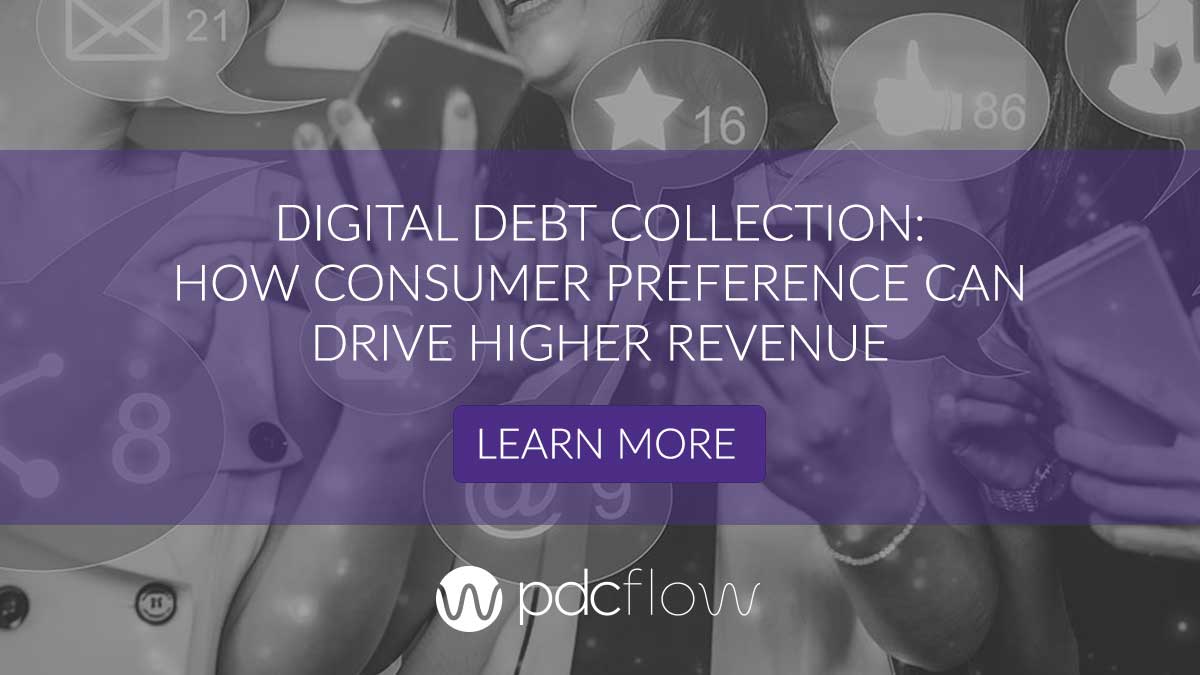Spam calls and change in communication preferences from younger generations is making it harder than ever for debt collectors to get consumers on the phone. That’s why digital engagement through email, text and electronic methods of payment are now becoming mainstream in accounts receivable.
Mike Frost, partner at Malone, Frost, Martin PLLC., has been watching the compliance landscape since Regulation F was implemented. Recently, he spoke to PDCflow’s Dawn Updike about the role of technology in debt collection, including consent, compliance, risk management and more.
Getting Consent for Digital Engagement
Regulation F states that email and text messaging are acceptable for certain debt collection activities, but you must have permission to do so. One main goal of the Bureau’s rule was to help consumers take control of their interactions with collectors.
Your digital engagement plan is important to ensure your agency is doing all it can to reach consumers. But before you start emailing contacts, they must give permission to be contacted in that manner. You should have opt-in and opt-out tracking and understand what type of consent you need to capture before reaching out to consumers.
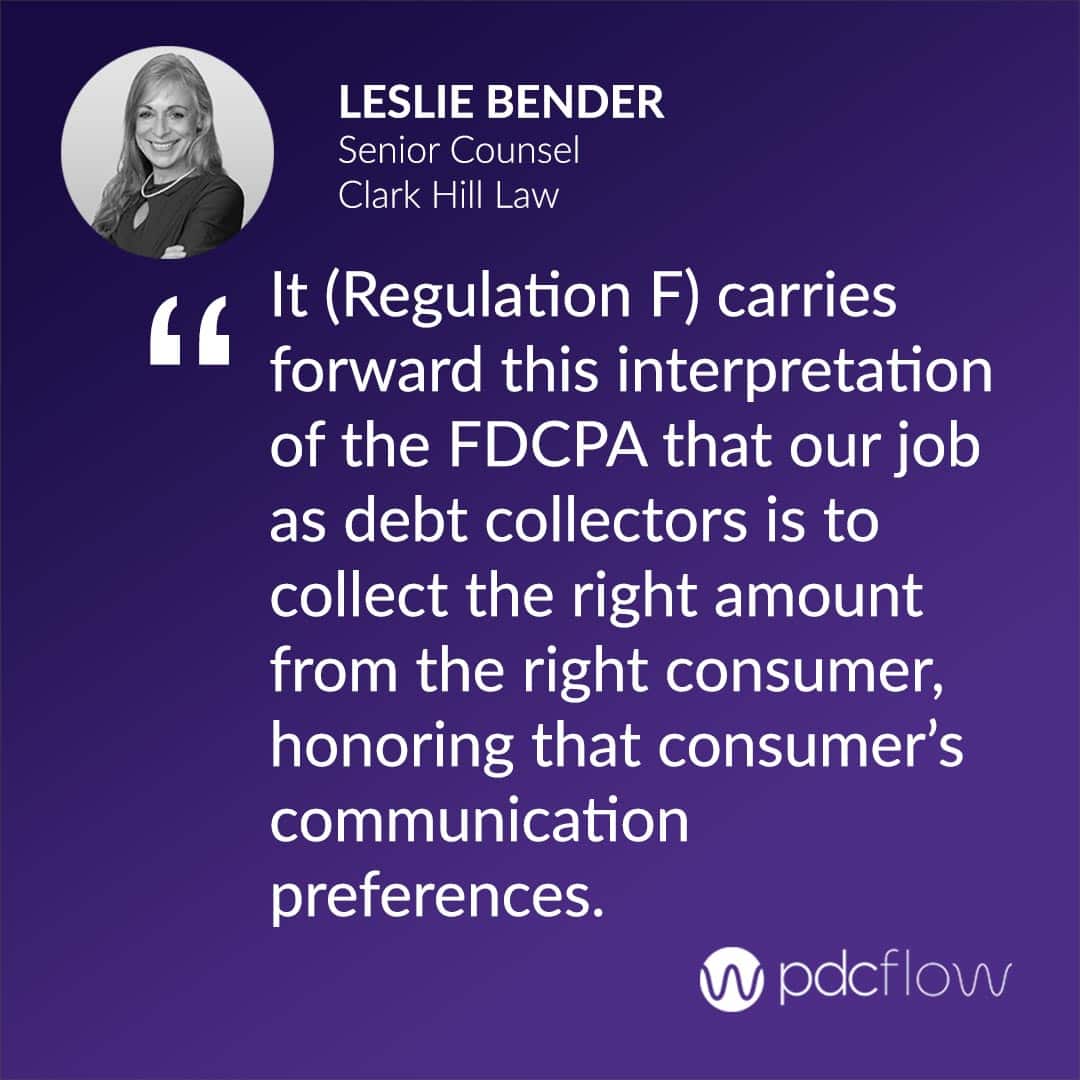
Two Types of Consent
Frost begins the discussion by explaining the two types of consent typically obtained for using digital communication tools – direct and pass through. Before starting any digital consumer engagement activities, determine your goals.
“Are you attempting to obtain the safe harbor from the CFPB under Reg F for text and email communication?” asks Frost. ”If you’re not, arguably, you can obtain that consent that passes through from the creditor.”
Pass-Through Consent and Creditor Clients
For those not interested in gathering direct consent to take advantage of the Regulation F safe harbor, there are still considerations to keep in mind before any digital engagement activities.
Mainly, you need to understand what language creditor clients use to gather permissions to text or email.
- Do consumers understand what they’re agreeing to?
- Does the client include language that maintains permissions after the account is given to you as a first or third party debt collector?
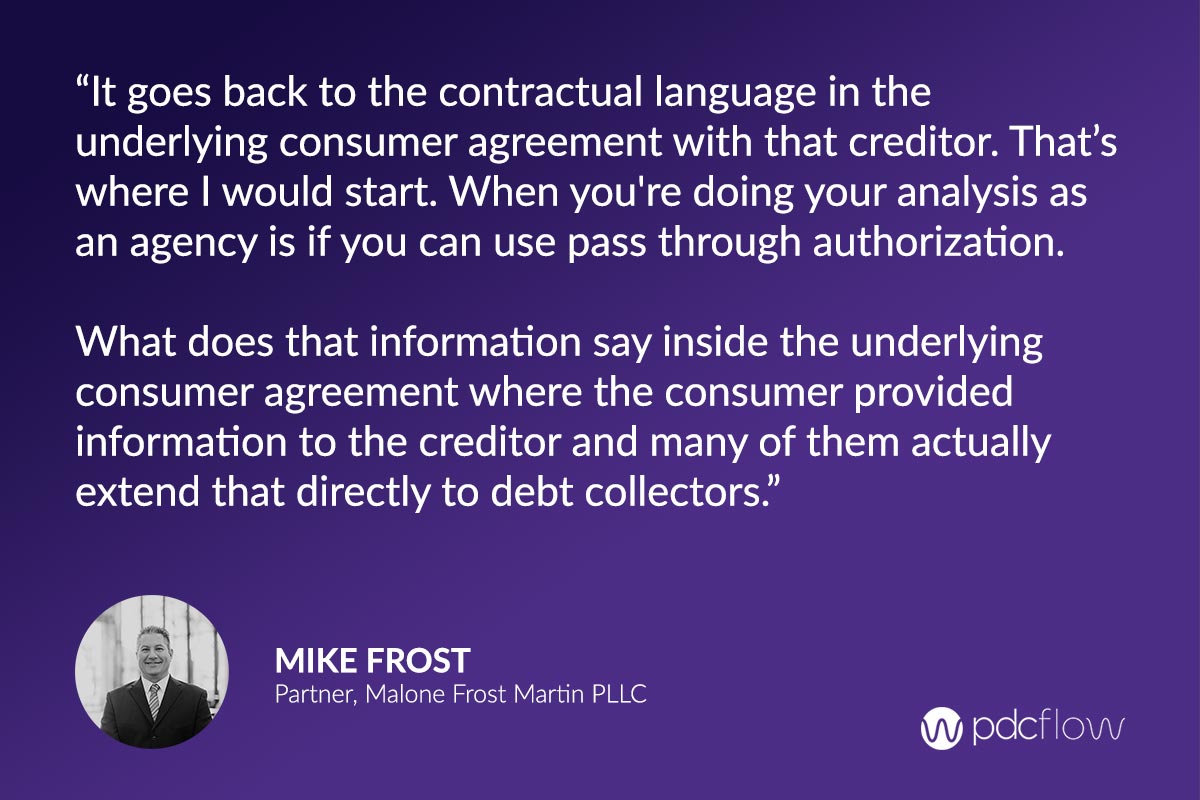
Your compliance staff and in-house counsel should be able to assess the language in creditor client consent agreements to decide if it satisfies requirements for third party use, and build strong policies and procedures around this data.
Remember to scrub email lists to make sure all contacts are current, valid and properly opted in before reaching out. Once proper evaluation and list maintenance has been performed, you can begin to communicate with those opted in via pass through consent.
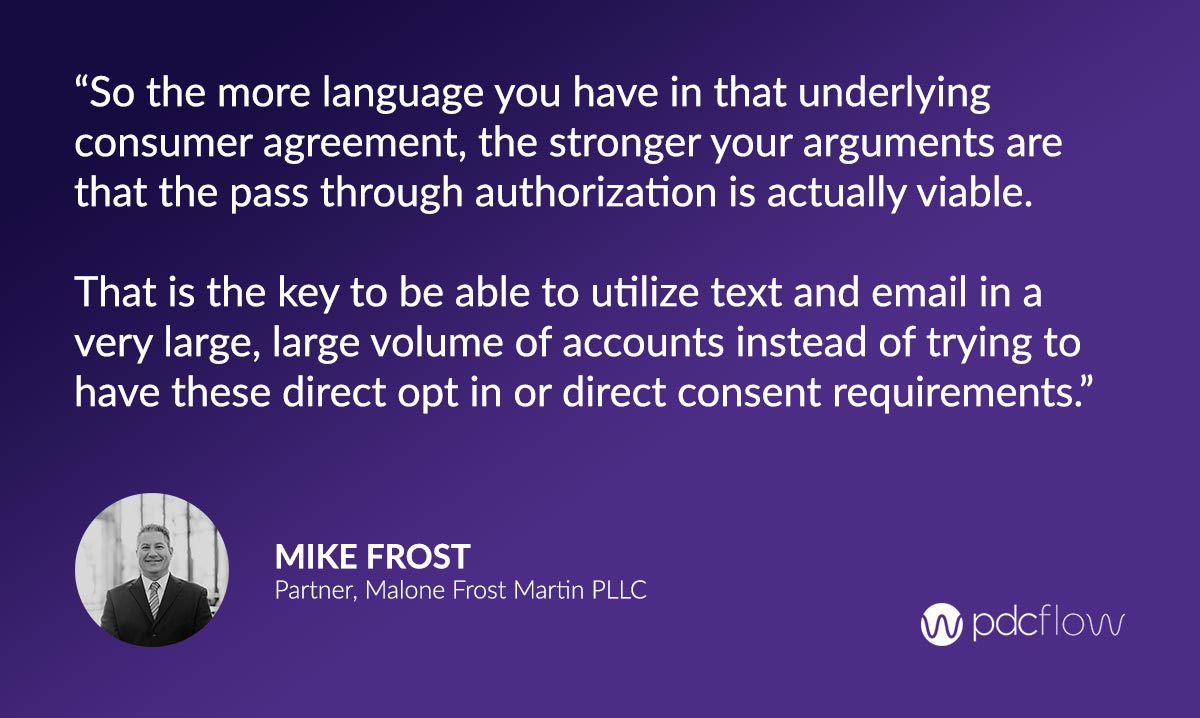
Validation Forms Through Email
Sending validation notices is possible under Regulation F, but as with other digital customer engagement channels, you need to be cautious and plan ahead to remain compliant.
The court decision Lavallee v. Med-1 Solutions, LLC left collectors wondering whether they can send a link in email to the consumer’s validation notice and still maintain compliance.
Because the answer can’t be as simple as a clear yes or no, Frost says to instead focus on deliverability with your email practices. Digital Engagement Technology has advanced since the ruling in question and cloud-based infrastructure allows attachments to be sent and stored individually for each email recipient.
These personalized storage and recall mechanisms mean this message was sent and can be accessed at any time, which can be considered deliverability.
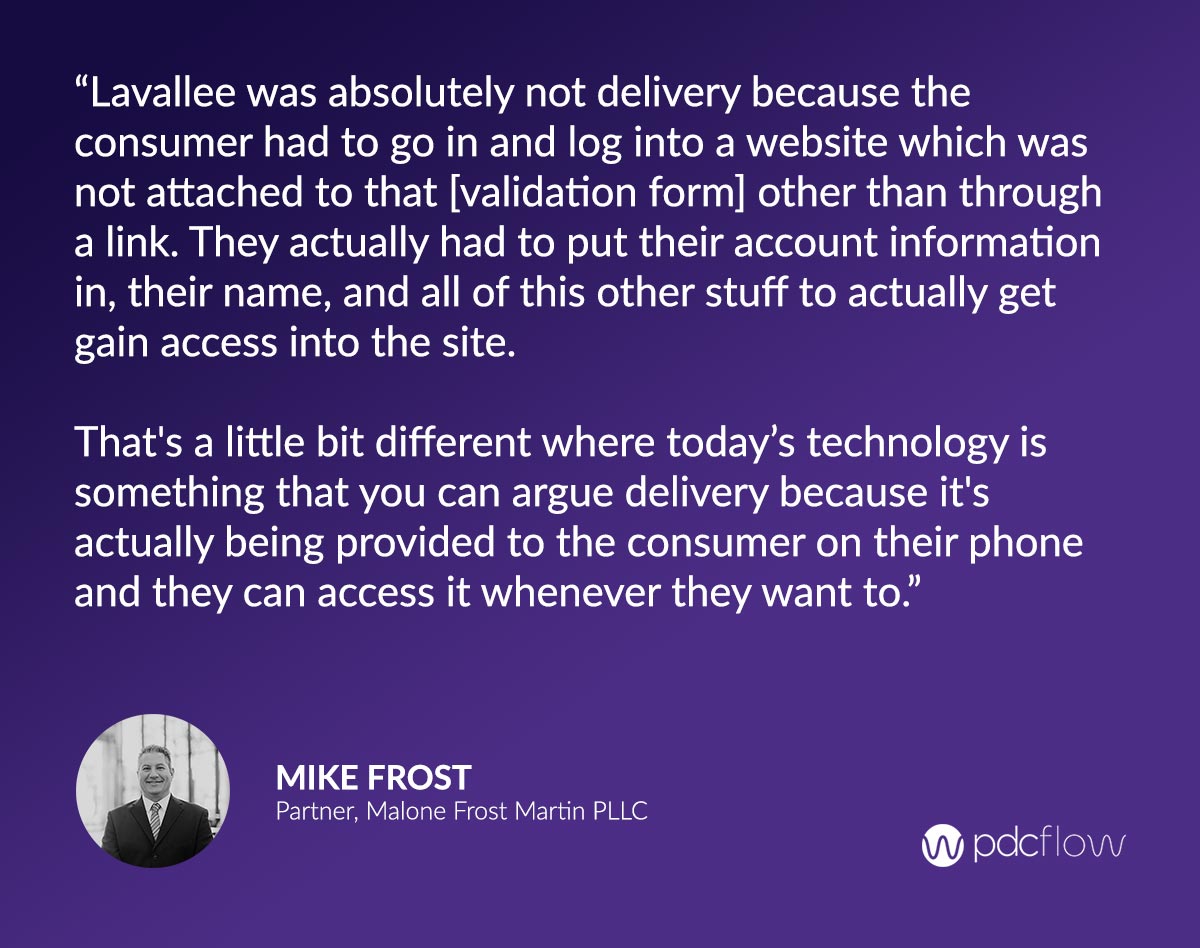
Some points to keep in mind:
- You should not send consumers an email that requires redirection to a website where they must create or enter and subsequently remember login and password information when they wish to view their notice.
- You should also have some safeguard in place to avoid third party disclosures (like dual authentication through a shared secret, like the last four digits of a social).
- Maintain the consumer’s ability to access documents throughout the full statute of limitations, so they can review items any time they need. Verify that access to documents or attachments will not expire early (speak to vendor partners if necessary).
Digital Engagement Via Text Message
Texting in debt collection can boost digital engagement but the practice brings some different considerations than email. Be cautious about following TCPA rules for texting carefully.
“The biggest liability we’ve seen in this industry in the 15-20 years that I’ve been in it is based on TCPA violations because there’s not a cap on statutory damages,” says Frost. “And every communication is potentially up to $1,500 in costs.”
This (along with the fact that most insurers won’t cover TCPA for debt collection) makes it essential for you to understand your business insurance policy and know the risks you are taking in your digital engagement channels.
- Monitor delivery rates, block rates, types of communication being sent, and any other important workflow details.
- Some governing bodies are trying to block certain message types from being delivered. It’s important to understand the current technology landscape, trends and latest actions taken by the groups in charge of these technologies for your digital communication strategy.
- Measure how you plan to use new technologies and their possible effectiveness. Ask yourself: is the way you intend to message with consumers going to be worth it? Consider the level of demand from consumers for the product, amount of work and time you will spend on set up and the difficulty and cost of maintaining compliance.
Weighing Risk in Your Digital Engagement Services
There will always be compliance concerns and other operational hurdles to overcome in your agency. The first step is to identify the problems you may encounter, then create a compliant way to solve each one.
Remember to approach issues realistically, and begin with a compliance risk assessment to fully understand what strategies are worth implementing and which may not make sense to adopt. Identify what actions you need to take to comply and the benefits your agency will see from technology adoption.
Want to know more about Flow Technology? Press ▶️ to watch our explainer video
PDCflow is the Ultimate Digital Engagement Tool
Here’s why:
- Every Flow smart request is unique to each consumer.
- A Flow smart request requires right party contact validation.
- A Flow smart request delivers the document directly to the consumer (no need for username/password or separate log in requirement).
- With Flow, the consumer can retrieve their Flow information including all documents upon demand.
Start your digital engagement strategy today. Schedule a demo to speak with a PDCflow digital engagement expert.




